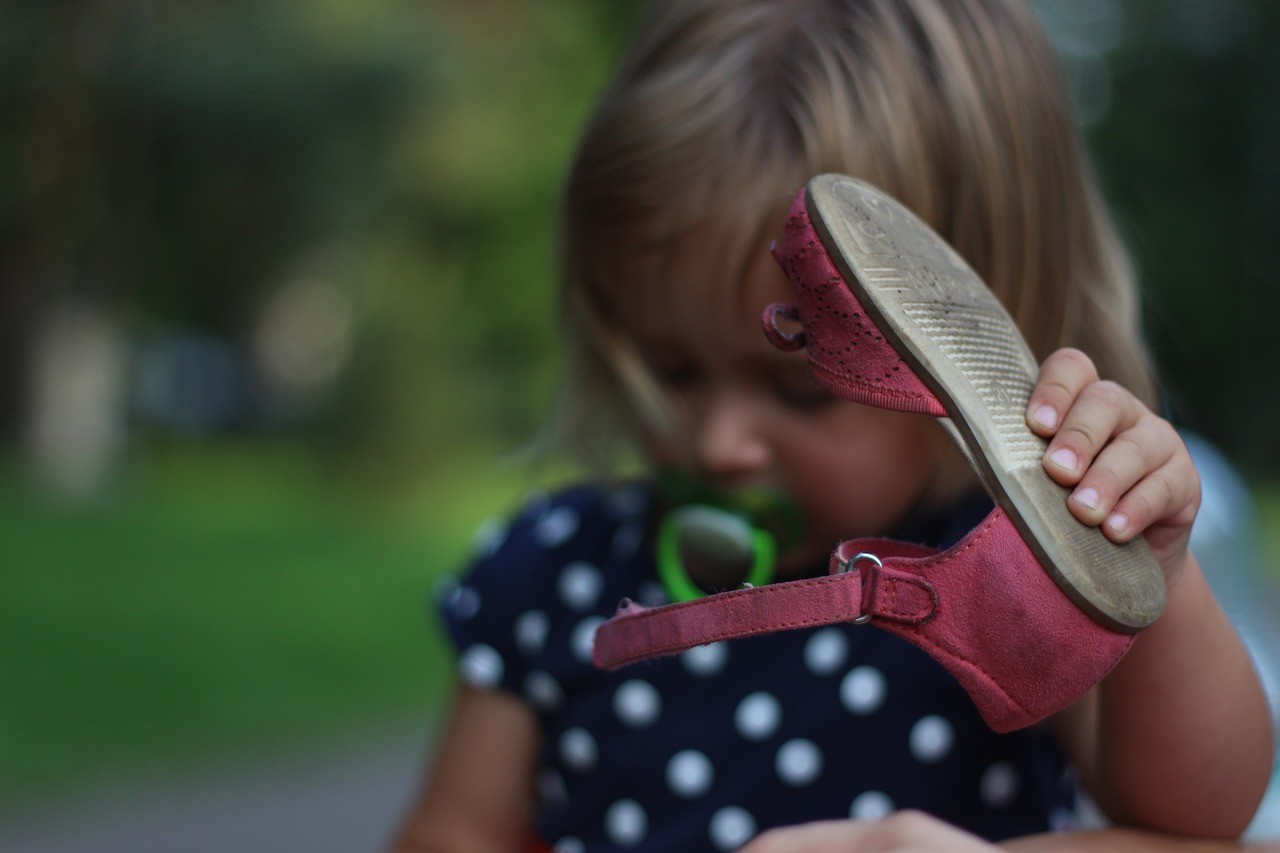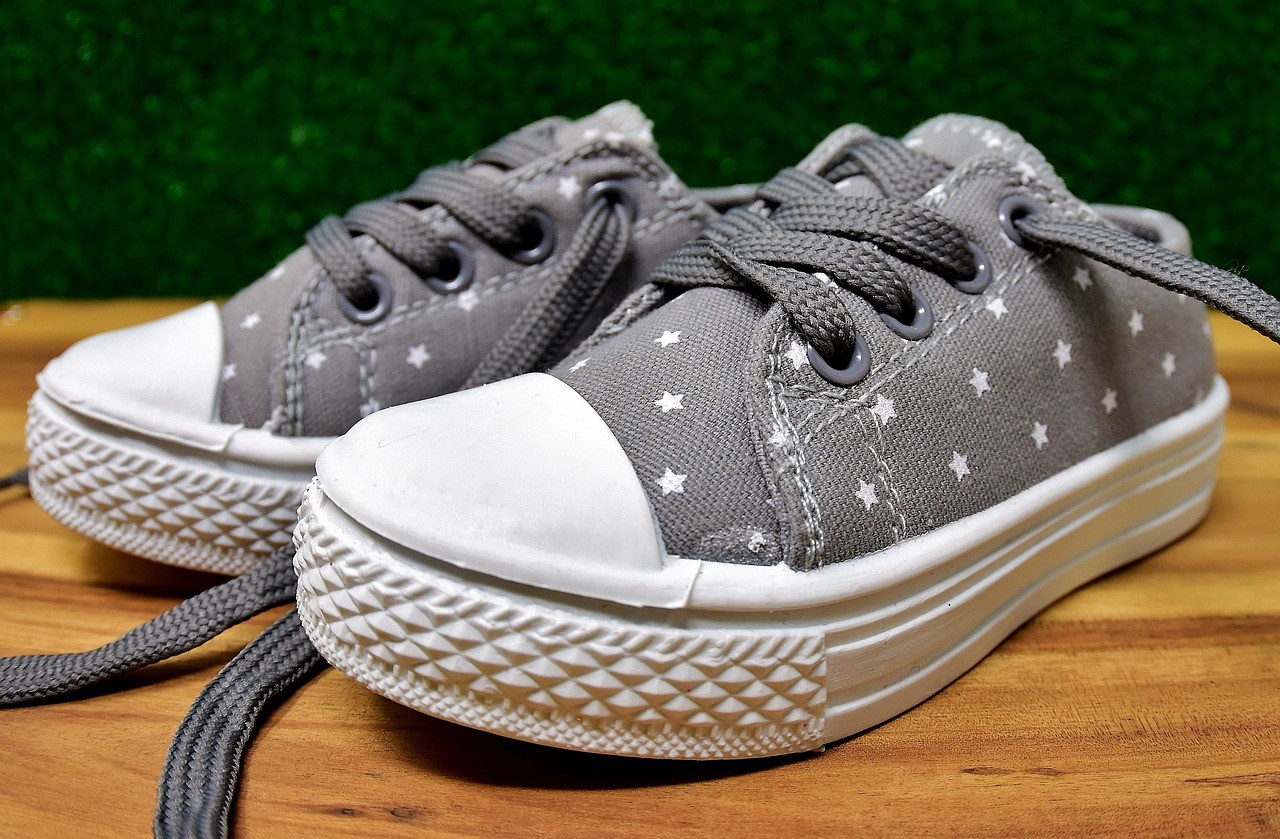Children’s shoes are hard to choose, however these tips are here to make the whole process a lot easier – so read on.
Buying shoes for your child
Children’s feet are still growing, and this means that it’s vital that you buy shoes that fit them properly, to avoid damaging the delicate bones and affecting the way that they walk. These tips will help you to find the perfect shoes for your kids, and make shopping for shoes that little bit less stressful.
When should you buy new shoes for a child?
It can be hard to tell when to buy new shoes for a child. If the child doesn’t complain that they are finding their shoes uncomfortable, they could be wearing ill-fitting shoes until they wear out.
It’s a good idea to inspect your child’s shoes on a regular basis so that you know whether or not they are fitting properly. It’s a clear sign that the shoe is ill-fitting if it bulges in one sport or if the seams are stressed.
If the toes build upwards, then this means that the shoes aren’t fitting properly. If the heels or toes are worn down, then this is also a sign that the shoe needs replaced.
When to go shopping
Try to go shopping for shoes in the afternoon or early evening, because feet tend to swell slightly over the course of the day, so shoes bought in the morning may be too tight.
If your child hates shoe shopping, then take them to a store that focuses primarily on footwear for children, because the staff will be better trained in how to work with a reluctant child. They will also be able to offer advice about what shoes to buy.
There are a lot of cute shoes, character shoes and fashionable brands on the market for kids and these can be a good choice if you’re buying for a special occasion. For the most part, though, it is better to buy practical shoes for kids, because they grow so quickly and the shoes see a lot of wear and tear, so you will be buying new ones on a regular basis.
Picking the perfect fit
Try to get your child’s feet measured when you buy the shoes, so that you know exactly what to buy. Sometimes, a child will find shoes comfortable in the store, but when they’re running, jumping, squatting on the floor and generally playing around they may notice that the fit is far from perfect.
Get both feet measured, with the child standing, to ensure that you get an accurate measurement.
The shoes should give enough room for the foot to move around a bit. Ideally this is about half an inch from the edge of the shoe toe to the edge of the child’s toes. Make sure that your child isn’t scrunching their toes up inside the shoe.
Don’t buy shoes that are too big, because your child might trip over, or might develop foot problems from walking with an awkward gait. Make sure that the shoe fits at both the front and the heel. The shoes should fit properly – resting snugly around the heel, but not too tight.
When adults buy a new pair of shoes we often talk about ‘breaking them in’. Really, even an adult should not have to do that. A properly fitting pair of shoes will be comfortable immediately.
Children should never have to break in their shoes. If they feel too tight or stiff, then they are not a good fit.
What makes a good shoe?

Children should not really wear slip-on shoes or backless shoes. Laces, buckles or velcro are a much better choice because the shoe will stay on better.
Children’s shoes should be made from a breathable material – ideally leather or canvas. Synthetic shoes will not allow for good ventilation and could increase the risk of fungal infections.
Durable, breathable shoes will be less likely to cause blisters, and less likely to end up getting smelly too! Many people choose orthopedic shoes for kids as they are thought to be better for their development.
Children should not wear high heels. They can do a lot of damage to the development of the foot, and they will teach the child bad habits for walking. They increase the risk of the child falling over on uneven or slick surfaces too.
Opt for shoes with a thick, sturdy and a strong gripping sole that is flexible. Once you have found something that is the right size and design, it’s a good idea to give your child a bit of leeway with choices – colour or pattern, for example, so that they feel like they have some input into the shopping experience.
Your children will be more receptive to going shoe shopping if they feel like they have some control over the process. Remember that they will be wearing the shoes every day so it will help if they like them.

